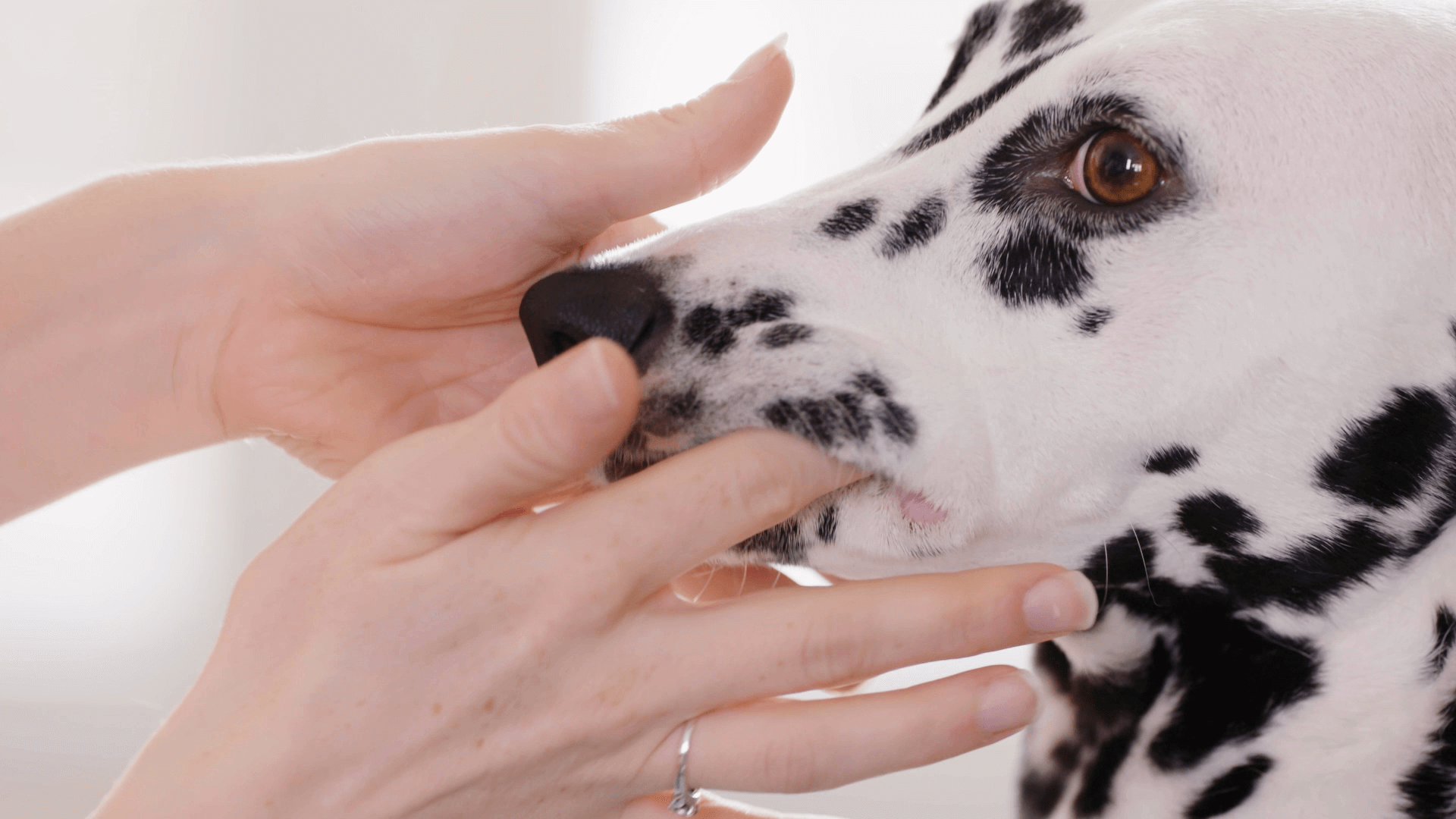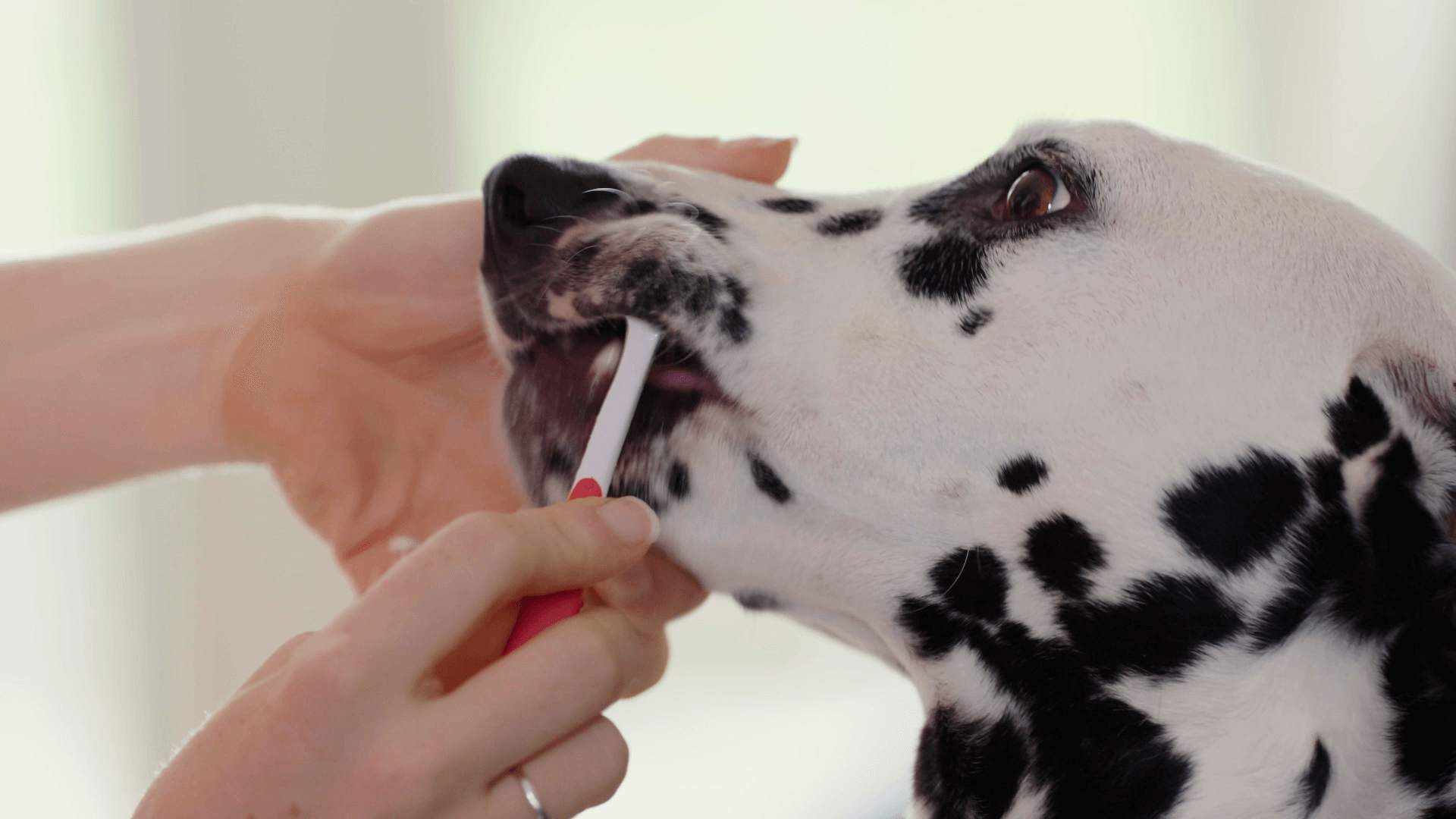How to brush your cat or dog's teeth
Introducing a good dental care regime into your cat or dog’s life will help keep them and their teeth healthy. It can also help reduce the need for veterinary treatment, which can be expensive for you and stressful for your pet.
While it is easier to introduce tooth brushing to your pet when they are young, this can still be achieved with adult pets. If you have a young kitten or puppy, beginning a dental care regime is a great way to bond, and gives you a chance to get to know what is normal in your pet's mouth.
Once dental care becomes the norm for your pet, this will make tooth brushing easier in the future.
A step-by-step guide to brushing your cat or dog’s teeth
Whatever the age of your cat or dog, you can familiarise them with tooth brushing by following the steps below.
Each step should be introduced slowly. You should only move on to the next step once the current step has been achieved. The duration and frequency of each step needs to be built up steadily to avoid teeth cleaning becoming a stressful experience for both you and your pet.
What kind of toothpaste and toothbrush do I need to brush my pet’s teeth?
Before you introduce tooth brushing to your pet, it’s important you have the right products. Always use a toothpaste specifically formulated for cats and dogs. Human toothpaste often contains fluoride which is toxic to pets, as well as foaming agents that will irritate your pet’s tummy if ingested.
We recommend choosing dental products that contain enzymes; these effectively reduce plaque, fight bacteria and help combat tartar build-up. Beaphar Toothpaste contains both protease and glucose oxidase enzymes, and is a tasty liver flavour so most pets readily accept it.
Step one - lift the lips to expose the teeth
.2022-08-23-12-16-43.png)
Lift your pet's lips to expose their teeth. Reinforce this by giving them lots of praise.
Step two - run your finger along their teeth

Once your pet is used to having their mouth touched on the outside, start running your finger along their teeth.
Step three - squeeze some toothpaste onto your finger and allow them to lick it off
 .
.
Once they are used to this, introduce them to a small amount of Beaphar Toothpaste. Place some on your finger, and allow your cat or dog to lick it off.
Step four - introduce a toothbrush.

When your pet is used to the taste and texture of the toothpaste, and having their mouth touched, you can start to introduce a toothbrush.
We suggest starting with the Beaphar Finger Toothbrush or if training a kitten or puppy, the toothbrush from the Beaphar Puppy Dental Kit. Prepare your chosen toothbrush by wetting the bristles and placing some Beaphar Toothpaste on it.
Step five - allow them to lick the toothpaste off the toothbrush

Allow your pet to investigate and lick the delicious liver-flavoured toothpaste off the toothbrush. Be sure to give them plenty of praise.
Step six - start brushing the teeth, gradually increasing the number during each session until all teeth can be brushed

When your pet is comfortable with each of the steps, you can combine all elements of your training. Start by brushing a few teeth with the toothbrush on this session. As your pet becomes more comfortable you can repeat steps 4 and 5 with the full-sized Beaphar Toothbrush.
Once your pet is happy with this larger toothbrush, you can gradually increase the number of teeth brushed in each session until all your pet’s teeth can be cleaned.
How often should I brush my cat or dog’s teeth?
Brushing your cat or dog’s teeth every day is the gold standard. This will help prevent the build-up of plaque and formation of tartar. However, any brushing is better than none. Brushing your pet’s teeth thoroughly 2–3 times a week will go a long way to improving their oral health.
To check your pet’s teeth for signs of dental problems or infection, simply lift your cat or dog’s lips, and look for signs of plaque, discolouration or redness. Then, rub your finger along their teeth and gums to check for any lumps.
Healthy teeth are shiny and white/cream in colour, with no rough patches on the surface. Your pet’s gums should be light pink in colour, and there should be no bad breath.
What if my cat or dog doesn’t like having their teeth brushed?
Some pets simply won't let you brush their teeth, especially if you are introducing them to the toothbrush when they are older. However, there are alternative products that you can use that will help your cat or dog’s dental hygiene.
These products contain a host of dental fighting ingredients that are effective even without brushing.
Once dental care becomes the norm for your pet, this will make tooth brushing easier in the future.





